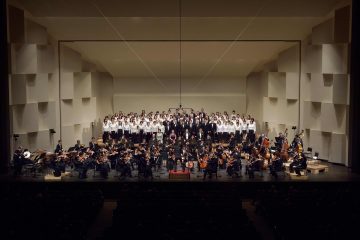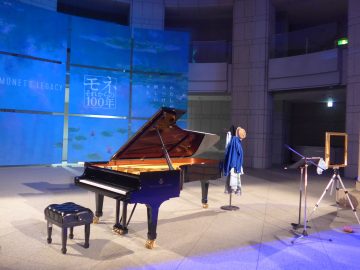Celebrating the 60th birthday! 60th anniversary of the opening of the Concert Hall - A glimpse into the personal history of Professor Yoshida Takafumi from the birth of the Concert Hall to the present
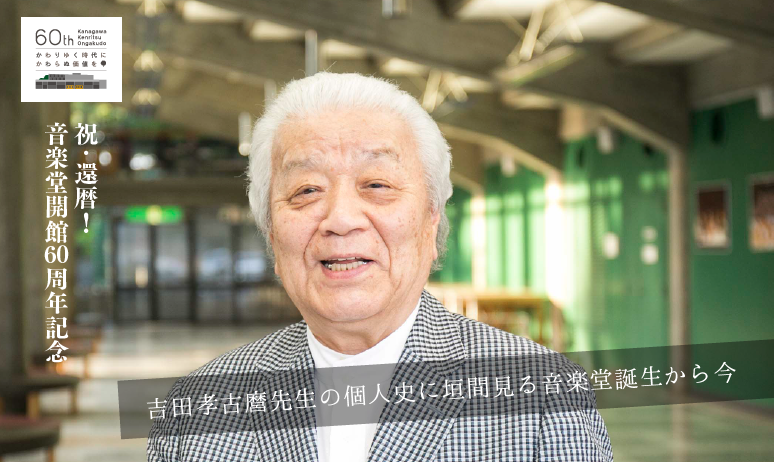
Interview & text: Akiko Inoue Photo: Masamasa Nishino
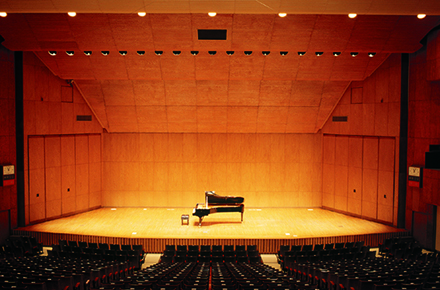

It is said that the reason why Kanagawa Prefectural Music Hall is called "Wooden Hall" comes from the wooden walls and ceiling inside the hall. Japan's first public full-scale concert hall, which was born during the chaotic period after the war, was once known as "the best sound in the East" and is still loved by professionals and amateurs, and by performers and audiences alike. In fact, this year (November 2014) marks the 60th anniversary of the birth of this music hall.
And here we have another person who is reaching the 60-year milestone: Mr. Takafumaro Yoshida (commonly known as Mr. Maro), who began his work as a choral conductor at the tender age of 20 and is still active at 80 years old.
MAGCUL.NET spoke with Mr. Yoshida Takakomaro to commemorate the 60th anniversary of these two organizations, who both grew up in Yokohama and share the common thread of music. We hope that the personal history of the professor, who has known the area well since before the music hall opened, will shed light on the 60 years of the professor and the music hall, and we will move on to the interview. (Location: Kanagawa Prefectural Music Hall Waiting Room)
*In the following article, we will consistently refer to Professor Yoshida Takakomaro as his nickname, Professor Maro.
Mr. Maro's elementary, middle and high school days - his encounter with music
- Since you lived in Yokohama, I think you have been watching the changes in the area around the Concert Hall since you were a child. The Concert Hall will soon be celebrating its 60th birthday, and Mr. Marot is also celebrating his 60th anniversary as a conductor. Congratulations!
By coincidence, I was 20 years old when the music hall was built. And since I entered the music world as a professional that year, it's the same 60th anniversary as the music hall. So you can tell the year without adding it up (laughs).
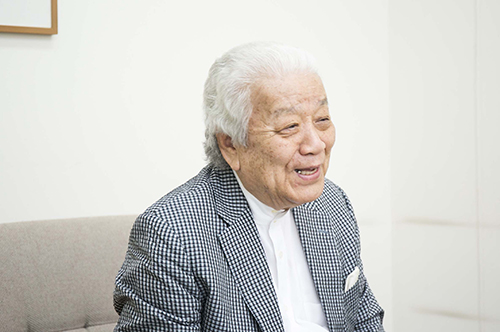
- Let's start by asking about your time in elementary school. Which elementary school did you go to?
I was born in Hokkaido, but came to Yokohama when I was seven. Because of the war, I changed elementary schools six times. When I was in the fifth grade, we were evacuated to Hakone, but soon after that, the famous Yokohama air raid (May 29, 1945) occurred and our house burned down, so we evacuated to Hokkaido, my parents' hometown. After the war, we moved back to Yokohama. At the time, there was a school called Oimatsu Elementary School, but it was taken over by Yokohama City Hall, so it was housed in Honmachi Elementary School, and I graduated from there.
After that, the education system was reformed in 1946 and changed to the 6-3-3-4 system (the current school system), and I fit in nicely right at the transition between the new junior high school and new high school systems (laughs). I was just a child so I didn't think too deeply about it, but looking back now I realize that one could live a life like that.
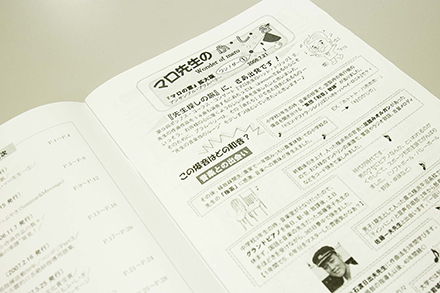
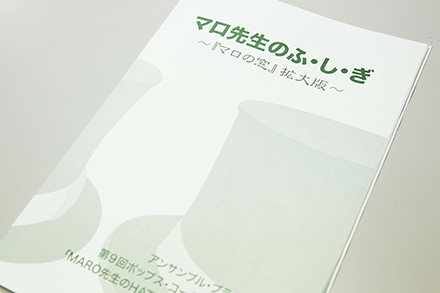
- I borrowed a booklet called "The Mysteries of Professor Maro" written by the staff around Professor Maro from Director Ito of the music hall. According to this booklet, when he was an elementary school student, he had a class called "group chord listening practice" to distinguish the sounds of bombs during air raids.
That's right (laughs). First of all, when the teacher plays the chord Do-Mi-So, everyone raises their hands to guess which note was played. But back then, we didn't use foreign words, so we did it with Iro-Ha-Ni-Ho-He-To. So Do-Mi-So is "Ha-Ho-To", and Si-Re-So is "Ro-Ni-To". For example, the song "The Village Blacksmith" is "Ho-To-To-Ha-Ho-Ho-Ho..." in terms of the sounds.
It was wartime, so Japanese and foreign planes would fly over during class and make noises like "Whhhhh" and "Boom." For example, the B-29 is a bomber, so it makes a low sound, and we would learn things like, "This sound is the sound of an airplane that is friendly to Japan," and "This is the sound of an enemy country, so when you hear that, you should evacuate."
- That's amazing... Was that your first experience with music?
But it wasn't that I learned music, it was more like I was told to do it. Nowadays, kids go to piano lessons from a young age, but back then, there were hardly any proper music classes because we were in the middle of the war. We didn't have an environment where we could play music at home. But now that I think about it, I think I may have had a slightly sharper sense of pitch than everyone else.
- Next, let's talk about your junior high school days. You attended Oimatsu Junior High School, where you first encountered a grand piano.
That's right. When I was in the third year of junior high school, the music room was next to the homeroom, so I would go there early in the morning, get a key from the janitor, and play the piano.
- Are you self-taught?
He was a Japanese teacher who could also teach music, so the son of the sandal maker and I started practicing together under his tutelage. The boy stopped by the summer vacation, but I continued for a year. Anyway, I practiced in the morning, at lunchtime, and after school, and when I practiced late into the night, the teacher came in after a staff meeting and watched over me again. It was only a year, but I was immersed in the piano... But back then, boys playing the piano were thought to be weak, so to avoid that, I would raise my hand whenever there was a class competition for softball or volleyball (laughs).
- I imagine you were a very busy junior high school student.
But I think that was fun. There were no cram schools like now, so we just played. At that time, Nogeyama Zoo hadn't been built yet, and the area was open to the public, so we played hide-and-seek there.
- That's great! So you went to Yokohama Heianuma High School, which was a new high school, and joined the orchestra club there. You were also a timpanist. So you started playing percussion instruments all of a sudden. What made you start?
Hiranuma High School was originally an all-girls school, but my class was the first to become co-ed. Before boys came, the orchestra club was made up of only girls, but when boys came, they thought I would be a good instrument carrier, so I was scouted. At the time, the Yokohama Symphony Orchestra was using Hiranuma High School's practice room, and they had instruments there. We could borrow them for performances, but we practiced by putting a board on the desk and making our own bamboo sticks. Timpani are not instruments that are used constantly in an orchestra, but are played at important times, so it was said that if you make a big mistake, it's dangerous (laughs).
- Your turn comes suddenly (laughs).
But I guess playing the piano helped me a little. In addition to the orchestra, I also created a mixed choir club with only first-year students during my high school years, and worked hard on that too. It was a very fulfilling experience.
- You first encountered choral singing in high school, right? That was the starting point of what you're doing now.
Entering college, dropping out, and becoming a choral conductor
- After graduating from high school, you started studying chorus, orchestra, and composition at university. It seems that you met the conductor Hiroyuki Iwaki during that time...
I went to Gakushuin University, and Iwaki-san also graduated from there. After graduating from Gakushuin, Iwaki-san went to a music school and played the timpanis for the NHK Symphony Orchestra. He played the same percussion instrument as me.
- It's a bit surprising to learn that you played the timpanis.
That's right. So, I came to my alma mater to teach as a substitute for Professor Koichiro Maeda (a person who only conducts practice). For some reason, they knew that I played the timpanis in high school, and scouted me. So I participated in practice just once. I remember that we were practicing Schubert's Symphony No. 8 (Unfinished). After that, I got busy with my choral activities in Yokohama...
- Also, I heard you've started studying composition.
That's right. In those days, painters, novelists, and musicians were synonymous with poverty, so my parents told me to go to a university where I could get a good job, and so I entered the political science department at Gakushuin University, but I took all my classes in the morning and spent all my afternoons directing choirs. I also studied composition under Hideo Ishiwata, a composer who graduated from Tokyo University of the Arts, when I graduated. I went to teach at my alma mater, Hiranuma High School, as an alumnus, and since it was a time when the "singing movement" (※) was popular, I was able to make a living just by conducting choirs, so I was also directing corporate choirs.
* A Japanese music movement centered on choruses that took place in the 1960s in workplaces, student clubs, and singing cafes, which were popular at the time, and was also a social movement.
The birth of the music hall - experience the best sound in the East
- Counting from this point, this year marks your 60th year as a conductor.
Meanwhile, the music hall also opened around that time. Having seen the scenery around the music hall from the burnt ruins after the war, what were your impressions when the music hall was first built?
Our coming-of-age ceremony was held at the Yokohama Women's Hall in Momijizaka (※), but the music hall opened in November of that year. But my play territory ended up not being around here, but around Nogeyama and the area around where Nogecho Shopping Street is now. At the time, the Noge area was all markets, with tents and all kinds of shops, and it was overflowing with people. But this area had a much quieter atmosphere. Just below the Iseyama Kotaijingu Shrine on Kamonyama and Momijizaka, there was a river called Sakuragawa at the time.
*Note: At that time, coming-of-age ceremonies were probably held in each ward.
- Really?! I can't imagine that right now...
The Concert Hall opened as Japan's first public concert hall, and is known for having "the best sound in the Orient." Now that such a hall is located close by, can you tell us about your experience experiencing music there?
Until then, there were no real public halls, so concerts were generally unreserved, but the music hall sold tickets for reserved seats, so seat attendants were needed. So I was invited by people in music institutions, who were aspiring to be musicians, to do part-time work. I didn't get paid, but I could listen to the live sounds of foreign musicians, so I did it a few times and listened to professional performances from overseas. To prevent customers from entering the venue during the performance, we stopped the audience outside, and between songs we asked them to enter through the door on the third floor, but to prevent them from taking their seats, we encouraged them to "stand here and listen until the performance is over." At that time, I was able to enter the venue with them and listen to the performance.
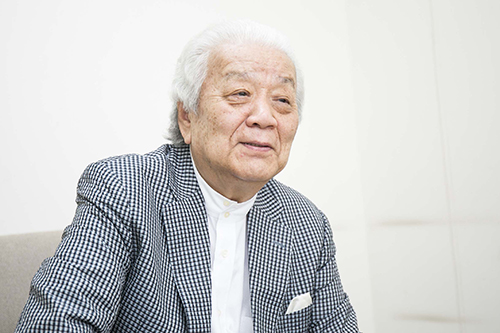
- Is there any concert that left a particularly strong impression on you?
I think it was when I heard an American pianist named Julius Katchen play. Until then, he had been playing songs I didn't know, but in the encore, he started playing Mozart's "Piano Sonata in C major K.545," which I studied in junior high school, with a smile on his face. So when I heard him play, I was surprised and thought, "What?! It's such a light piece?" I got goosebumps. That feeling still remains with me today. The place where the music hall office is now was my dressing room at the time, and when I went there after the show to get an autograph, there was a huge line... In the end, I was shy and didn't get one. Thinking about it now, I wish I had gotten one...
-What was your impression of the acoustics in the music hall?
At that time, I listened to orchestras, and even when I was sitting in the back row, I could hear the "whoosh" of violins turning the pages. It may have been because it was my first time in a hall and everyone was concentrating hard, but the sound reverberated all the way up to the top. I was really surprised by that.
- I can sense the surprise Professor Maro felt at the time.
It is quite moving that now you are on stage at the music hall, which has maintained the same sound for 60 years. You are currently the advisor for the "Mother's Chorus" which started very early, six years after the hall opened, and is a long-established event which will be held for the 54th time this year.
I became involved with the "Mother's Chorus" 20 years ago, and since then we have been holding the event as an executive committee. However, the Mother's Chorus itself started relatively early on as an independent project of the music hall, originally with the aim of letting people who lived far away in the prefecture and couldn't usually perform in a proper hall experience good acoustics. The music hall was a dream hall for people who wanted to sing there, so even now, everyone still comes up this hill just to sing (laughs).
- I see. (Laughs) And it's still the same today.
A hat trick from Professor Maro: composition, arrangement and conducting!
- In addition to being a choral conductor, you also do a lot of work as a composer and arranger.
Immediately after graduating from high school, I worked as a composer teacher for two years, and learned how to compose, which is how I started arranging. I also arranged pop songs for choruses, and by chance, someone from Ongaku No Tomosha came to listen to them, and I got work as a translator and arranger, and my work started appearing in various textbooks. So, like this year, on the 10th anniversary, I divide it into three parts, composition, arrangement, and conducting, under the title "Maro's Teacher Hat Trick," and hold a concert that is the culmination of my work in various halls in Yokohama. By the way, I held the 40th anniversary "Maro 40" at the music hall. You can find the pamphlet here.
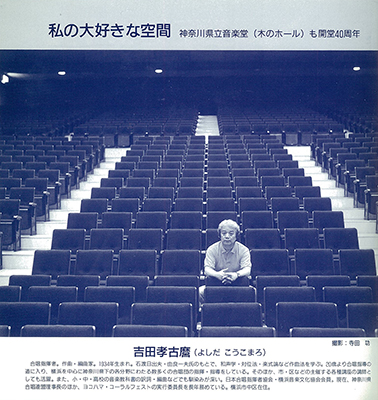
- It is a nice photo!
My favourite place
- Well, since we're running out of time, let me ask my last question. What is your favorite place in the music hall?
Of course, that's on stage.
It may seem strange for me to say this since I'm not a housewife, but when I'm on stage at a music hall, I feel like I'm in a kitchen. It's like the whole space fits in your hands, like you can embrace it all. It's not a very spacious space, but a space that can hold you in just the right amount. You can embrace the whole audience and draw them towards you. It's a similar feeling to when a housewife is humming while cooking.
- Thank you for your wonderful comment.
By tracing his personal history, which may seem a little fast, I was able to get a sense of the atmosphere at the time the Concert Hall was established, even though it has been 60 years since he began his conductor career. I also felt that I was able to get a glimpse of the rich relationship between the hall and the people that the Concert Hall has nurtured over these 60 years.
The "Music Hall 60th Anniversary Week" will be held soon, and will include a 60th anniversary concert of the "Hall of Fame Prefectural Music Hall," in which Professor Maro will perform. There will also be a variety of other events, including the popular architectural tour. (For more information, please see the related events below!)
Center Grill's "Special Hama Lunch" is a long-established restaurant with a 67-year history.
In this interview, Professor Maro told us about a restaurant he recommended. Center Grill is a Western-style restaurant that has been around for 67 years, which is older than the music hall, and has been a frequent visitor since Professor Maro's student days. To get straight to the point, the menu item that Professor Maro recommends is the "Special Hama Lunch (1,250 yen)."
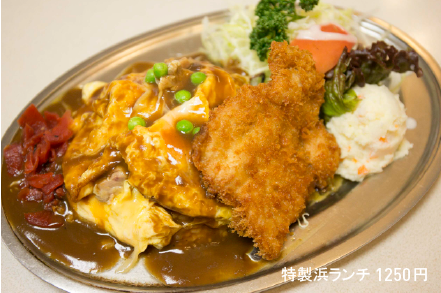
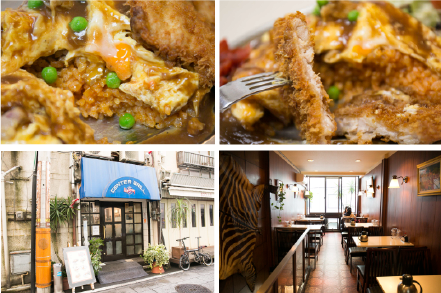
This dish is full of volume and content, with omelet rice, chicken cutlet, vegetables, and potato salad all on one plate. Just looking at the omelet rice topped with soft, runny eggs will whet your appetite. Even with all these main ingredients, it doesn't feel heavy at all, thanks to the exquisite seasoning of the demi-glace sauce and the chicken ketchup rice inside. It goes perfectly with the freshly fried, crispy chicken cutlet. Another nice thing is that although it's a lunch menu, it can be ordered all day. In addition to the "Special Hama Lunch (1,250 yen)" that we had this time, there is also the regular "Hama Lunch (1,050 yen)," which has white rice inside the omelet rice. This menu was created after responding to the greedy requests of customers who said, "I want to eat chicken cutlet" and "I want to eat salad" in addition to the omelet rice. The reason it has been loved for 67 years may not only be the taste, but also the style that evolves with the customers while retaining the old-fashioned style.
□ Store Information □
Center Grill
http://www.center-grill.com/
11:00~LO 21:15
Closed: Mondays (open on public holidays)
1-9 Hanasakicho, Naka-ku, Yokohama, Kanagawa Prefecture, 231-0063
045-241-7327
